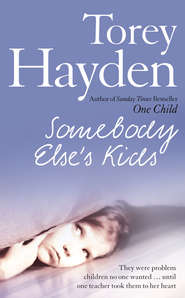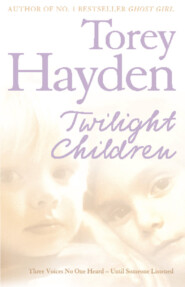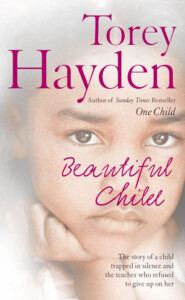По всем вопросам обращайтесь на: info@litportal.ru
(©) 2003-2024.
✖
The Tiger’s Child and Somebody Else’s Kids 2-in-1 Collection
Настройки чтения
Размер шрифта
Высота строк
Поля
“You liked working with little kids, didn’t you?” she said.
I nodded. “I still do.”
“It showed.”
Silence came then and we went back to our food. Then Sheila looked up.
“Can I ask you something, Tor? It’s from the book.”
“All right.”
“How come you didn’t marry that guy Chad?” she asked.
“I was too young. I wasn’t ready,” I said. “If I had, it wouldn’t have worked out.”
Pensive over her pizza, Sheila picked at it, ferreting out the olives and eating them with her fingers. “Too bad,” she said. “It would have made for a brilliant ending to your book.”
“Probably, but this was real life.”
“Real life never follows the script, that’s the problem,” she replied. “You and him getting married and adopting the little girl. That’s how every single person who reads it is going to want it to come out.”
“Yes, I know, but it isn’t how it did come out.”
“Yeah, I know.” She smiled faintly. “But you know, his eldest daughter? The one called Sheila? Well, that’s right. She should be called Sheila, but by rights, she should have been me.”
Chapter 11 (#ulink_b713881f-273b-53bb-b409-a401d95fac9a)
The summer program at the clinic had been my idea. I had always felt there was a better chance of effecting change when I was with a child several hours a day, day in, day out, rather than in just one or two hourly sessions, which was one of my original reasons for choosing teaching over psychology as a career. This was borne out to me at the clinic, which was the first place I’d worked that stuck so strictly to the fifty-minute “psychiatric hour.” I felt there must be some other way.
My office partner, Jeff, was intrigued with the idea of working with children in a different setting from the therapy room; so together we developed the idea of a morning summer-school program to run for eight weeks in June and July. We made plans to use a nearby school that was normally vacant over the summer, and from the clinic client list, we began to handpick the children we felt would benefit most. Because of the experimental nature, we decided to keep the number modest. It was just Jeff and I supervising, and I thought it was best to start out with something I knew we could keep in control. Thus, we settled on having eight.
In the group, three of the children were severely handicapped. Joshua, five, and Jessie, six, were both autistic and couldn’t speak, and Violet, eight, was labeled a childhood schizophrenic. Of the five remaining, there were two girls, Kayleigh, a five-year-old who persistently refused to speak in group settings, and Tamara, eight, a startlingly beautiful girl with dark, exotic features, who suffered from depression and bouts of self-mutilation. Of the three boys, there was David, a bright, beguiling six-year-old arsonist, Alejo, a seven-year-old Colombian boy who had been adopted at four by American parents, and a six-year-old tornado named Mikey.
Experience had long since taught me that the higher the adult-to-child ratio, the more effective a program generally is. I didn’t want a one-to-one situation, as I felt this would destroy the benefits of the group, but I felt we needed enough adults in charge to minimize the chance of any given situation degenerating into total chaos.
Jeff took umbrage at the idea that we couldn’t handle eight children between us. He pointed out that he was, after all, a fully qualified doctor, ready to sit for his final board exams in child psychiatry, and well on his way to certification as a psychoanalyst. I pointed out in turn that this setting required rather different skills. Over the course of the three hours each day that the children were with us, they would need not only therapy, but entertainment, exercise, refereeing and nurturing, to say nothing of Band-Aids, drinks, snacks and taking to the toilet. This was more than two adults could sanely do, if we wanted to accomplish something more than baby-sitting.
Thus, together we approached Dr. Rosenthal to fund us more staff for the project. He agreed to do the best he could. As a result, we gained Miriam, a former teacher. She was an older woman, lively and decisive, with silvery hair and an enviable figure. I liked her instantly. She had a sensible, down-to-earth approach, but with that touch of class I admired but didn’t possess myself. Yet, even with Miriam added to our staff, I was still eager for more help. With such young, handicapped children, we didn’t need many expensive, highly trained professionals. We just needed hands, real hands, plain and simple.
I was editing One Child during the period when Jeff and I were setting up the summer-school program, and the contrast of reading about my situation with Sheila’s class in comparison to the luxury I was currently working in struck me dramatically. There were eight children then, every bit as severely handicapped, and what did we have but a young, fairly inexperienced teacher, an ex-migrant worker without a high school diploma and a junior high student. Junior high student. Junior high student!
Sheila! Of course.
This seemed an ideal solution. Old enough to be responsible, yet young enough to be flexible and cooperative, Sheila was at an age to be very useful in a setting like this. In return, it would give her the chance to spend the summer in a structured, stimulating environment with supportive adults. Best of all, it would allow the two of us to spend time together in a natural way. I wanted to get to know Sheila again. The child I had loved so much had to be somewhere in that gangly adolescent. I wanted the chance to seek her out.
Sheila was delighted with this proposition. She had had no work lined up for the summer and even when I explained that the pay would be very small indeed, covering not much more than her bus fare and lunch, she remained enthusiastic.
Jeff didn’t have a chance to meet Sheila before the first day of the summer program. We had discussed the need for an extra pair of hands and he had been pleased that I could come up with a volunteer so easily. I gave him a brief summary of Sheila’s background and my previous relationship with her, but I didn’t go into great detail, as it seemed inappropriate. If anything had become obvious to me over the previous weeks, it was that Sheila had moved on from her former self; and just as I would not have expected an employer to take into account what I had done when I was six, I didn’t feel it was necessary to discuss her background.
Privately, I was looking forward to introducing Sheila to Jeff. In the summer-school program, Sheila’d find herself surrounded by adults who were all intellectually formidable, but among us only Jeff was probably Sheila’s equal. I doubted she had previously encountered another person of her ability, and as a consequence, I was keen to acquaint them. Both showed similar personalities, given to quirky, somewhat unpredictable behavior, and both emanated that aura of isolation so common to highly gifted individuals. I was tickled to think of the possibilities in bringing them together.
On the first day, Sheila arrived forty-five minutes early. What she was wearing looked—honest to God—like thin white long johns. Over this she had layered a pale-colored, flower-sprigged shift. To complete the outfit, she’d laced on heavy, black work boots more befitting of a lumberjack. And, of course, on her head was the ever-present Cubs baseball hat.
I gaped. I’m embarrassed to admit it, I, who has cultivated the ability to disregard the most bizarre of behaviors, but my mouth dropped right open.
“Like it?” she asked ingenuously.
God, was I getting old? Was this what teenagers were wearing now and I hadn’t noticed? I was dressed in a pair of Levi’s and a work shirt and thought I was being avant-garde at the clinic. “Well,” I sputtered, “it’s unique.”
“My dad doesn’t let me wear things I like.”
“Where did you get it?” I asked.
“Different places. I got this dress at a rummage sale and I got these down at the Goodwill place,” she said, indicating the longjohn things. “They didn’t cost me much. My boots cost me the most.”
I found myself startled. The ghost of that six-year-old in her ratty brown T-shirt and outgrown overalls still haunted me. I had been unprepared for this adolescent fashion plate.
“You don’t mind, do you?” she asked and I realized that for her to ask, she must have read my surprise.
I shook my head. “No, I don’t mind.” And I suppose I didn’t, really. The fact was, she looked surprisingly good in her long johns and little flowered dress. Weird, yes, but still attractive, if one suspended personal taste and just looked at her. And confident. That’s what really struck me. For the moment, anyway, Sheila was clearly very pleased with who she was.
Jeff arrived shortly afterward. He was carrying a huge box of Pampers. “Yo, catch, Hayden!” he shouted and lofted the box at me. Sheila leaped back in surprise as I lunged to catch it. I set it on the ground.
“What are those for?” she asked.
“Help, help! Let me out!” came a little voice from the direction of the box.
Sheila looked alarmed and I thumped Jeff’s arm. “This is Dr. Tomlinson’s sense of humor.”
“Jeff to you, sweetheart,” he said and chucked Sheila under the chin. “Like your outfit.”
Sheila recoiled from his touch.
I grabbed the box of Pampers and took them into the book closet alongside the room. Sheila followed.
“Is that your office partner you’re always talking about? That’s Jeff?”
I nodded and pushed the box up onto a shelf.
“Yuck.”
“Oh, he’s all right. Got a weird sense of humor, but he’s good fun. You’ll like him.”
“Don’t count on it.” She leaned back against the wall. “How come you’ve got those diapers?”
“Because one little boy isn’t toilet trained yet,” I replied.
“You’re kidding. You mean he shits in his pants?” she asked.











